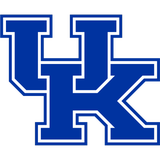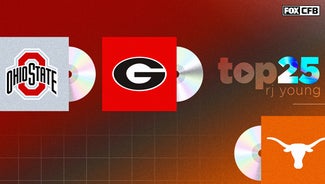
Changes: AP hoops polls help tell story of game's evolution
PHOENIX (AP) From the days of Adolph Rupp through the era of one-and-done, no program has maneuvered through the decade-by-decade changes in college basketball quite like Kentucky.
The program has been the most consistent mainstay over the history of The Associated Press poll - present in the very first list that came out in 1949, and among the Top 25 in every poll in the soon-to-be-completed 2016-17 season.
But while many of the biggest names have stayed the same - North Carolina, Duke, UCLA and Kansas are among the stalwarts over nearly seven decades' worth of AP polls - the games these teams play have changed wildly, both on the court and off.
A look at the teams that dominated each decade and the issues and styles of the game in the eras they played:
1950s
The `50s were a decade of great change and huge scandals in college basketball. Led by players such as Bill Spivey and Frank Ramsey, Kentucky made its way into the AP poll nearly 90 percent of the time over the decade.
But while many programs were opening their doors to black players, Rupp wouldn't make that leap until 1970 - four years after Kentucky lost to the all-black starting lineup at Texas Western in the 1966 national title game.
In many parts of the country, the college game was more beloved than the still-young and largely regional NBA. More than 18,000 fans packed Madison Square Garden on March 14, 1950 for the NIT quarterfinal between Kentucky and City College. City College pinned one the most humiliating defeats ever on Kentucky, 89-50, on its way to winning both the NIT and the NCAA championships.
Less than a year later, both schools were caught in a point-shaving scandal that still stands as one of the worst gambling scandals to hit U.S. sports.
1960s
This was the decade that marked the start of the UCLA dynasty and full-scale desegregation of the college game. But some might argue the biggest game-changer in the 1960s was stationed down at Duke.
The Blue Devils led the way in the AP poll by showing up more than 69 percent of the time in the `60s. More significantly, coach Vic Bubas began the shift in recruiting, turning it into the full-time job it has become today. Bubas was among the first to identify players long before their senior year in high school and start putting out feelers to show the Blue Devils were interested.
One of Bubas' biggest wins: Getting Jeff Mullins of Lexington, Kentucky, out from right under Rupp's nose. Mullins went on to average nearly 22 points a game.
1970s
With Bill Walton manning the middle after Lew Alcindor graduated, UCLA stayed on a roll that ended with 10 titles under Wooden. There's never been another dynasty like it.
Wooden's classic stylings about coaching - it's not just about the game, but about life - became an ingrained part of the profession.
UCLA was in every poll in the 1970s, while Marquette and North Carolina only missed a handful.
The decade closed, however, with the national title game between two men who need no introduction - Magic and Bird. Though the NCAA Tournament wasn't known as March Madness yet, this game drew record ratings for basketball, pro or college, and set the stage for the college game to become more than just a regional, seasonal affair.
1980s
North Carolina was in 98.2 percent of the polls - what else would you expect from a program featuring Michael Jordan, James Worthy and coach Dean Smith?
But the team with the second-most mentions, Georgetown, told one of the biggest stories of the 1980s: The rise of the Big East and round-the-clock hoops on cable TV, all of which led to the start, in earnest, of what we now call March Madness.
Another big story: The introduction of the 3-point line, which refocused the game from inside to outside and gave players like Billy Donavan as much of a chance to impact a game as Patrick Ewing.
The NCAA expanded the tournament to 64 teams and gave us the popular brackets we still fill out today. The AP poll, like the seedings themselves, were a useful tool to track teams, but certainly not the be-all, end-all.
Three champions of the 1980s - North Carolina State (1983), Villanova (1985) and Kansas (1988) - were completely absent from the poll for half or more of the season in which they won.
1990s
Arizona established itself as a perennial power, making the poll 99.4 percent of the time and staying on a string of consecutive NCAA Tournament appearances that eventually reached 25. North Carolina was in 93 percent of the polls with five trips to the Final Four to boot.
Still, this decade was a personality and controversy driven roller-coaster ride, where no legacy was safe but the basketball sure was fun to watch. Among our favorites:
UNLV and Jerry Tarkanian.
Michigan and the Fab Five.
Arkansas and ''40 Minutes of Hell.''
Duke and Christian Laettner.
2000s
Welcome to the era of one-and-done. In 2005, the NBA's new collective-bargaining agreement stated that players had to be at least 19 and one year removed from their high school graduation to be eligible for the draft.
Though John Calipari turned it into a fixture, first with Derrick Rose and the Memphis team that made the national final in 2008, the first real test of how good a one-and-doner could be came at Syracuse. Before the new NBA rule made it mandatory, Carmelo Anthony chose a year of college over a direct trip to the NBA and helped the Orange win it all in his only season, 2003, before entering the draft.
No surprise that Duke (98.95 percent) and Kansas (87.89) found themselves in the poll the most; they hadn't gone down the one-and-done road in any serious way yet. But times would keep changing.
2010s
Kansas has been in every poll of this decade, with Duke missing only a handful.
Kentucky would be right there with them were it not for the 2013 season - the lone season in which Calipari's one-and-done strategy did not pay off.
More coaches are buying into this way of winning. Kentucky's run at an undefeated season in 2015 ended instead with Duke holding the trophy. The Blue Devils had three one-and-doners that season: Jahlil Okafor, Tyus Jones and Justise Winslow.
---
For more AP college basketball coverage: http://collegebasketball.ap.org and http://twitter.com/AP-Top25






































































































































